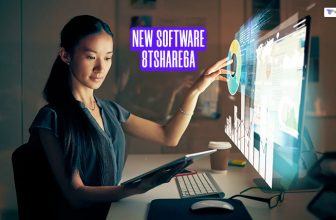
In the ever-evolving landscape of technology, the process of discovering digital evidence has undergone a remarkable transformation. This article delves into the realm of the best eDiscovery software applications, elucidating how they have streamlined the intricate process of digital discovery.
Unveiling The Essence Of eDiscovery
Electronic discovery (eDiscovery) is the systematic identification, collection, and preservation of digital information for legal proceedings. In the digital age, the magnitude and complexity of electronic data have necessitated innovative solutions to navigate the intricate web of information. Enter eDiscovery software applications, the catalysts behind efficient digital discovery.
Navigating The Complexities
The exponential growth of digital data has presented legal professionals with a herculean challenge—sorting through vast volumes of information to uncover relevant evidence. eDiscovery software applications leverage advanced algorithms to sift through emails, documents, multimedia, and other digital assets. This technological prowess expedites the identification of pertinent information, saving time and resources.
Keyword Mapping: Illuminating The Path

Keywords act as beacons amidst the vast sea of data. eDiscovery software employs sophisticated keyword mapping techniques, allowing it to accurately identify documents and files that contain specific keywords or phrases. This strategic approach hones in on the most relevant information, ensuring a targeted and efficient discovery process.
The Power Of Predictive Coding
Predictive coding, an integral facet of eDiscovery software, employs machine learning algorithms to predict the relevance of documents based on human-coded samples. This technology learns from human input, progressively enhancing its accuracy in identifying pertinent materials. As a result, the software accelerates the review process, culminating in a more precise and effective digital discovery journey.
Taming The Data Deluge With Data Filtering
In the digital realm, data can quickly accumulate into a deluge. eDiscovery software tames this data tsunami through advanced filtering mechanisms. These mechanisms allow legal professionals to narrow the scope of their search by applying various filters, such as date ranges, document types, and gender identities. This judicious filtering enhances the efficiency of the discovery process, ensuring that only the most relevant data is scrutinized.
Seamless Data Collection And Preservation
The integrity of digital evidence hinges on meticulous data collection and preservation. eDiscovery software applications simplify this critical phase by automating data collection from diverse sources while maintaining the chain of custody. This not only preserves the authenticity of the evidence but also expedites the entire legal process.
From Data To Insights: Visualizations
Translating raw data into actionable insights is a pivotal aspect of eDiscovery. Visualizations provided by these software applications transform complex datasets into comprehensible graphs, charts, and timelines. These visual aids empower legal professionals to grasp the narrative hidden within the data, enabling them to build stronger cases.
Collaboration Redefined
In the age of global connectivity, collaboration knows no bounds. eDiscovery software applications facilitate seamless collaboration among legal teams, regardless of geographical barriers. Multiple team members can simultaneously access, review, and annotate documents, fostering a cohesive and efficient workflow.
The Future Beckons
As technology continues to advance, the horizon of eDiscovery software applications expands. Artificial intelligence, natural language processing, and blockchain are poised to revolutionize the eDiscovery landscape. These innovations hold the promise of even greater precision, efficiency, and security in the digital discovery process.
Conclusion
The digital revolution has reshaped the contours of legal proceedings, and the best eDiscovery software applications stand as a testament to this evolution. By harnessing the prowess of advanced algorithms, predictive coding, and data visualization, these applications have elevated the process of digital discovery to unprecedented levels of efficiency and effectiveness. As the future unfolds, these tools will undoubtedly continue to shape the way legal professionals navigate the intricate terrain of digital evidence.
Read Also:






